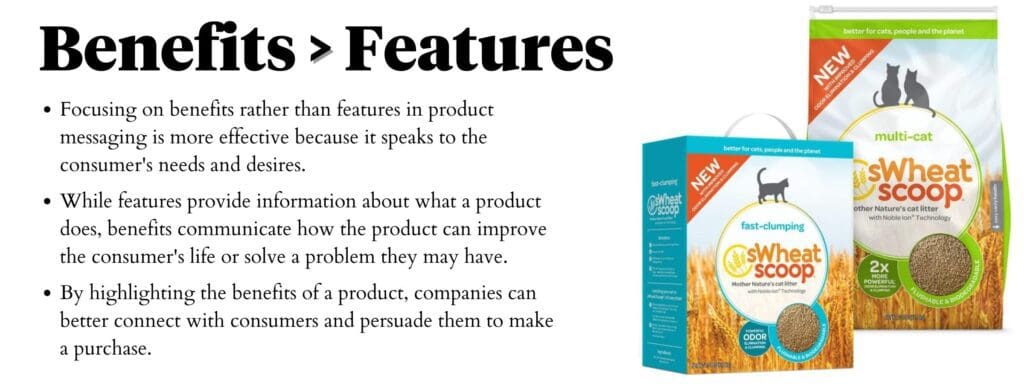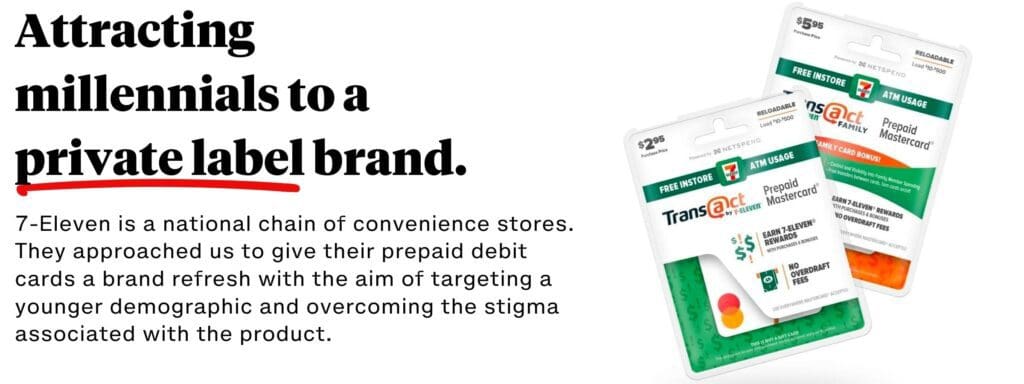With all the talk of gen Z & gen alpha consumers, we millennials (myself included) appear to be old news. But this middle age crowd contributes a substantial amount of money to the market. The Millennial generation (lesser known as gen y) boasts a total spending power of $2.5 trillion in 2022, up 1.1 trillion from just two years ago. Let that sink in!
Yep, all those Baby Boomers had kids, and now those kids have their kids, giving them purchasing power for their entire family. If you’re a brand catering to millennials or products millennials buy for their gen x kids, you must understand the purchase drivers and what creates brand loyalty. But how do companies reach this coveted market? After all, Millennials are notorious for being the “me” generation, and companies have spent years adapting their marketing assets to cater to this market.
But reaching these customers can be a more straightforward process. With a few simple facts about Generation Y and a little packaging design strategy in your corner, you’ll capture this market’s attention and keep them engaged with your products.
Who Are Millennials & What Defines Them?
Millennials are those born between 1981 and 1996, putting Generation Y between 27 and 41 in 2023.
This group once caught flak for being self-centered and self-absorbed, but isn’t this true about all generations? Millennials were the first generation that appeared to “want it all,” but we’re interested in purchasing personalization. As younger consumers, they wanted to ditch the outdated ideologies of their Baby Boomer parents and realize that they had the power in the buyer/seller relationship.
This mindset starkly contrasts the thought process held by older generations. In days gone by, buyers had fewer shopping options at their disposal. Any consumer packaged goods (CPG) they wanted would need to be fulfilled by small, local shops near their homes, as Amazon and ecommerce were still futuristic fantasies. As such, this generation stuck with brands they had access to and were familiar with. They built long-term relationships built on mutual trust and brand loyalty.
Of course, the computing revolution took little time to change the game. Thanks to the internet and the rise of ecommerce, kids of the Millennial era had access to more shopping options, brands, and products than ever before. This simple change formed the basis of the Millennial mindset and how brands should speak to them.
The Influence of Social media on millennial packaging design
Millennials are also the first to receive influence from pop culture through social media platforms. Millennials are a demographic who hold an interesting staggered stance, with one foot in the world of digital influence and the other held firmly in word of mouth. Millennial marketing requires an omnichannel marketing approach to support your packaging strategy.
The Importance of A Shared Identity
When the internet came, the Boomer mentality of sticking with one trusted brand went out the door. Millennial buyers found more logic in switching between brands based on their preferences, prices, or other values (such as being eco-friendly) that shaped their sense of identity. In the Millennial mind, products aren’t just products but extensions of ourselves and our values.
Financially savvy avoid premium products; Health conscious will not skimp on quality; Plastic detracts from the socially aware. Unlike the previous generation, millennials attach their values to their purchasing decisions.
These trends are crucial to understanding the Millennial market’s values in the products they buy and how CPG manufacturers can reach them through their packaging design.
According to a 2020 consumer culture report, Millennials emerged as the most impulsive and most easily influenced of the generations studied, with some helpful insights on purchasing behavior:
- 82% of Millennials would buy a product on sight if they liked it enough.
- 83% prefer to buy from companies that share their values.
- 71% will pay more for a product if some proceeds go to charities.
These statistics align with what we know about Millennials. Gen Y is a group that wants it their way (which we’ll blame on the Amazon “buy it now!” culture); they’ll show loyalty to companies who share their values and pay more for the privilege of supporting those brands.
The biggest takeaway for CPG brands is that your packaging needs to go beyond mere description. Your designs must clarify that your product is more than the product itself; it’s about a shared value or ideal with which the Millennial consumer can connect.
Addressing Millennials Through Packaging Design
Millennials respond to messaging about a company’s vision, ideals, and values. How millennials respond to messages is the right place to start when considering your packaging decisions.
Layout and Design Features
If your company has a specific selling point related to its values, include it in your packaging design. Typical examples here include:
- Claims about the product being organic, non-GMO, or sustainably farmed.
- How the company shares a percentage of its proceeds to environmental conservation.
- How the package itself is 100% recyclable, compostable, or reusable.
Collectively, this comes back to the old marketing mantra of selling the benefit rather than the feature. It doesn’t matter what the product is. If you can clear your company values to potential buyers, you’ll have a better chance of connecting with Millennial buyers. (Having an eye-popping packaging design doesn’t hurt, either.)

How can you ensure your benefit is unique enough for all consumers to consider your brand? Not every benefit yields greater purchase intent. Testing your packaging design for message differentiation is the only way to ensure your message matters to the millennial hoping to align with your product.
Packaging Material
If Millennials are the first online shopping generation, then each product’s packaging doesn’t matter as much. Right?
Wrong. While Millennials enjoy online shopping, it won’t replace brick-and-mortar retail. The above Consumer Culture report found that 68% of Millennial shoppers prefer to find products in the store rather than online. Consumer culture proves that competing on the retail shelf is still the name of the game.
In 2023, brands marketing to every generation need to take an omnichannel approach. Creating impactful retail packaging must be at the forefront of their brick n mortar and digital channel strategy.
Consider your packaging material, particularly if your brand messaging supports sustainable packaging with ideas of a low carbon footprint and eco-friendliness. Your layout talks the talk, but your packaging materials must walk the walk. Claims about eco-consciousness won’t go far if you jam your products into petroleum-based plastic cases.
Also, consider how different packaging can be reused and repurposed. Besides the apparent green aspect, consumers generally prefer product packaging with multiple uses. Reusable and compostable packaging align with the (financially stable) Millennials’ well-documented fondness for sustainability. And it’s just good practice for any CPG brand wanting to reduce its carbon footprint.
Packaging design trends popular with millennials
Here’s a look at some of the most common packaging design trends for the millennial segment.
The Influence of Pop Culture
Pop culture has had a significant influence on packaging design for millennials. Many brands have embraced the visual nature of social media platforms like Instagram and have redesigned their packaging to be more visually appealing and eye-catching. The trend of “pop” has led to an increase in using bold colors, graphic design elements, and unique shapes in packaging design.
Popular trends and cultural phenomena have also inspired packaging design for brands looking to tap into the zeitgeist and appeal to a younger audience. For example, the rise of superhero movies and franchises has led to increased packaging featuring superheroes inspired by their aesthetics. Overall, pop culture has played a significant role in shaping packaging design for millennials and is likely to continue to do so in the future.
The Power of Nostalgia
Nostalgia has been a major trend in packaging design for millennials in recent years. Many brands embrace the packaging design trend of looking to past decades for inspiration, releasing packaging that pays homage to past aesthetics. We can see this trend in the popularity of retro-inspired packaging designs that harken back to the designs of the 1950s, 1960s, 1970s, and 1980s.
For example, brands such as Stranger Things and Nike have released packaging that evoke nostalgia and draw upon the popular culture of these decades. Nostalgia is a successful marketing strategy for many brands, as it appeals to millennial consumers’ desires to connect the past to the present.
Humor and wit
Incorporating humor into packaging design has proven an effective way for brands to connect with millennial consumers. Many millennials appreciate humorous-playful packaging and are more likely to purchase products that make them laugh or bring a smile to their face. Brands have responded to this preference by incorporating humorous elements, such as puns, jokes, and pop culture references, into their packaging design.
For example, a snack food brand might use packaging that features a humorous slogan or a playful illustration to appeal to a younger millennial audience. We can also use humor in packaging design to set a brand apart from its competitors and make it more memorable for consumers. Overall, humor in packaging design can effectively engage and appeal to millennial consumers.
Aligning With Interests
Brands have recognized the importance of aligning their packaging design with the interests of millennial consumers to engage and appeal to them effectively. We can achieve this through packaging design elements that reflect this demographic’s hobbies, lifestyles, and values.
- An outdoor gear brand might use packaging featuring imagery and design elements that appeal to nature enthusiasts.
- A brand of artisanal food products might use packaging that aligns with sustainability and farm-to-table dining values.
- A brand of environmentally friendly cleaning products might use packaging highlighting its commitment to sustainability and eco-friendliness.
Overall, aligning packaging design with the interests and values of millennial consumers can be an effective way for brands to connect with and appeal to this demographic.
The Gen-Z Influence
Gen-Z children can impact the packaging design preferences of millennial parents through their influence on environmental concerns and their connection to popular culture and trends. It’s a bit of a yin and yang as millennial moms want to be like their daughters and gen-z boys want to be like their millennial fathers. Dependent on the category, brands that can effectively appeal to the interests and values of both generations may be more successful in this market.
The Importance of Positioning
The importance of packaging design in strengthening brand identity for millennial consumers comes down to communicating a distinct and repeated message about your brand’s position. Hopefully, you’ve done your research (and testing) to determine what position to take and how to communicate the
We Guarantee Packaging Performance
Are you a beauty brand looking to increase retail performance? SmashBrand is a consumer testing and packaging design agency helping brands dominate the cosmetic industry. If you want your beauty product to outperform its competitors, book a time to discuss your project with our team.

Subscribe to
Nice Package.
A monthly newsletter that unpacks a critical topic in the FMCG & CPG industry.
Free Resource.

CPG product repositioning guide.
Explore the five undeniable signs your CPG product needs repositioning along with strategies for leveraging consumer insights for a guaranteed market lift.
Learn More About CPG product repositioning guide.